Mount Kailash, a majestic peak in the heart of the Himalayas, is not merely a mountain; it’s a spiritual beacon drawing pilgrims from diverse corners of the world.
This sacred site holds immense significance in Hinduism, Buddhism, Jainism, and Bon faiths, captivating the hearts and minds of devotees for centuries.
In this exploration, we delve into the cultural traditions and rituals surrounding the pilgrimage to Mount Kailash, uncovering its spiritual, historical, and natural allure.
Geographic Location
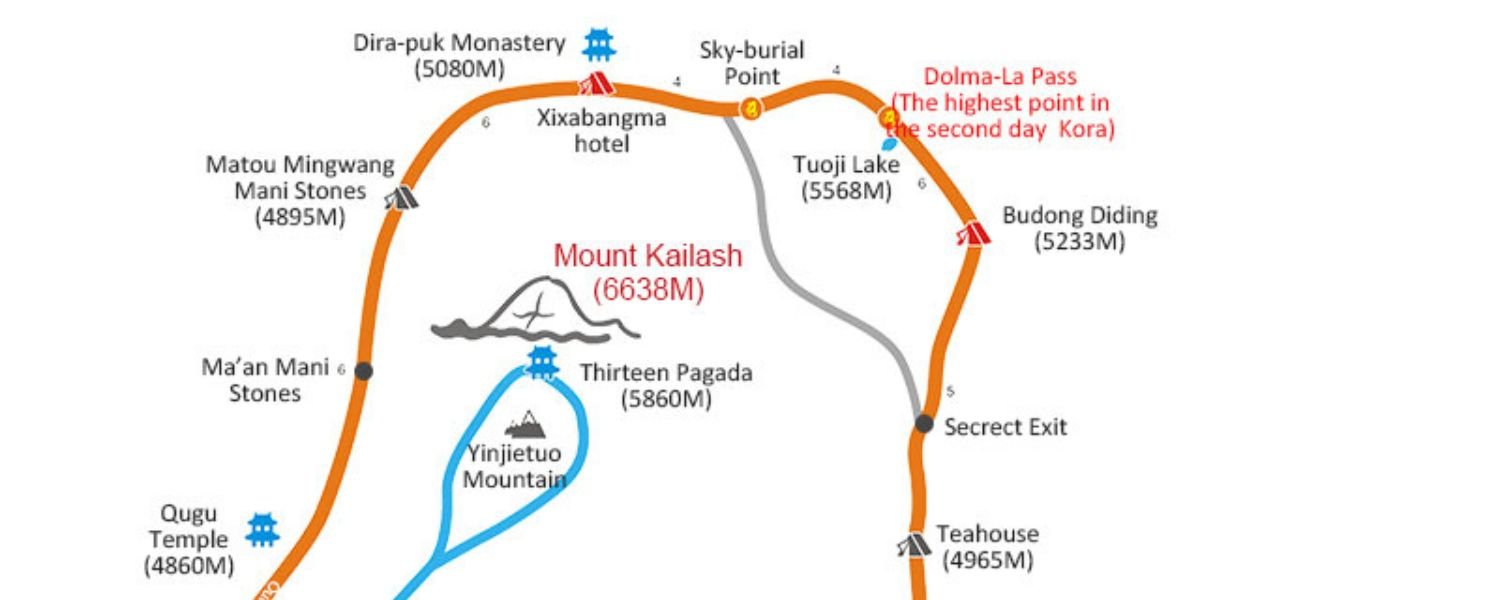
Mount Kailash stands tall in the remote western reaches of Tibet, in the Kailash Range of the Transhimalaya. Its towering presence commands attention, rising to an impressive height of 6,638 meters (21,778 feet) above sea level. Nestled amidst rugged terrain and pristine landscapes, its isolation adds to the aura of mystique surrounding it.
Spiritual Significance
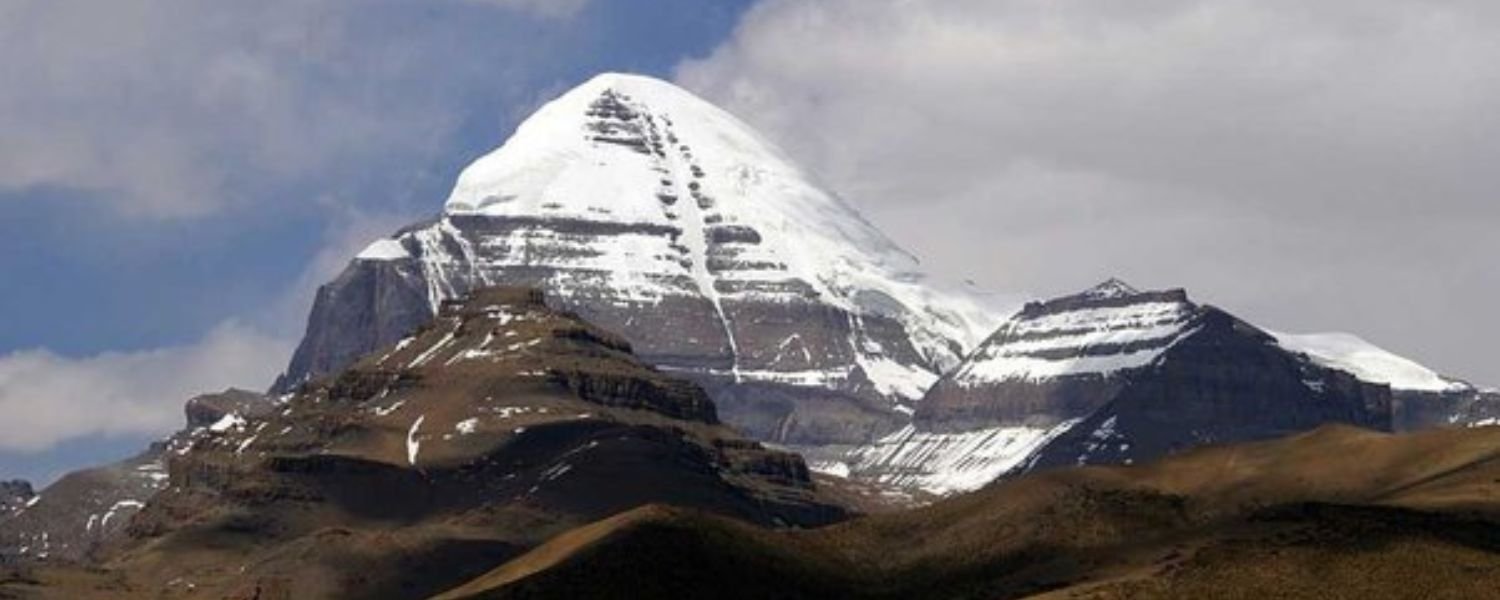
The spiritual significance of Mount Kailash transcends geographical boundaries, resonating deeply within the hearts and souls of millions worldwide.
Central to Hinduism, Mount Kailash is revered as the earthly abode of Lord Shiva, the supreme deity associated with creation, destruction, and transformation. Its towering peak, believed to resemble Shiva’s face, symbolizes the divine’s eternal presence and cosmic power.
In Buddhism, Mount Kailash is revered as the sacred dwelling place of Demchok, an embodiment of enlightened wisdom.
Pilgrims from Buddhist traditions undertake the kora to purify karma and attain enlightenment, following in the footsteps of revered masters and bodhisattvas.
Pilgrims from Jain traditions undertake the arduous journey to seek spiritual purification and liberation from worldly attachments.
Similarly, followers of the Bon faith regard Mount Kailash as the axis mundi, the center of the universe and the source of all spiritual power.
Rituals and ceremonies performed around the mountain are believed to invoke blessings and protection from evil forces.
Across these diverse spiritual traditions, Mount Kailash serves as a beacon of divine energy and cosmic consciousness, inspiring pilgrims to embark on a transformative journey of self-discovery, spiritual renewal, and transcendence.
Its spiritual significance resonates deeply with the human quest for meaning, purpose, and ultimate liberation from the bonds of samsara.
Cultural Importance
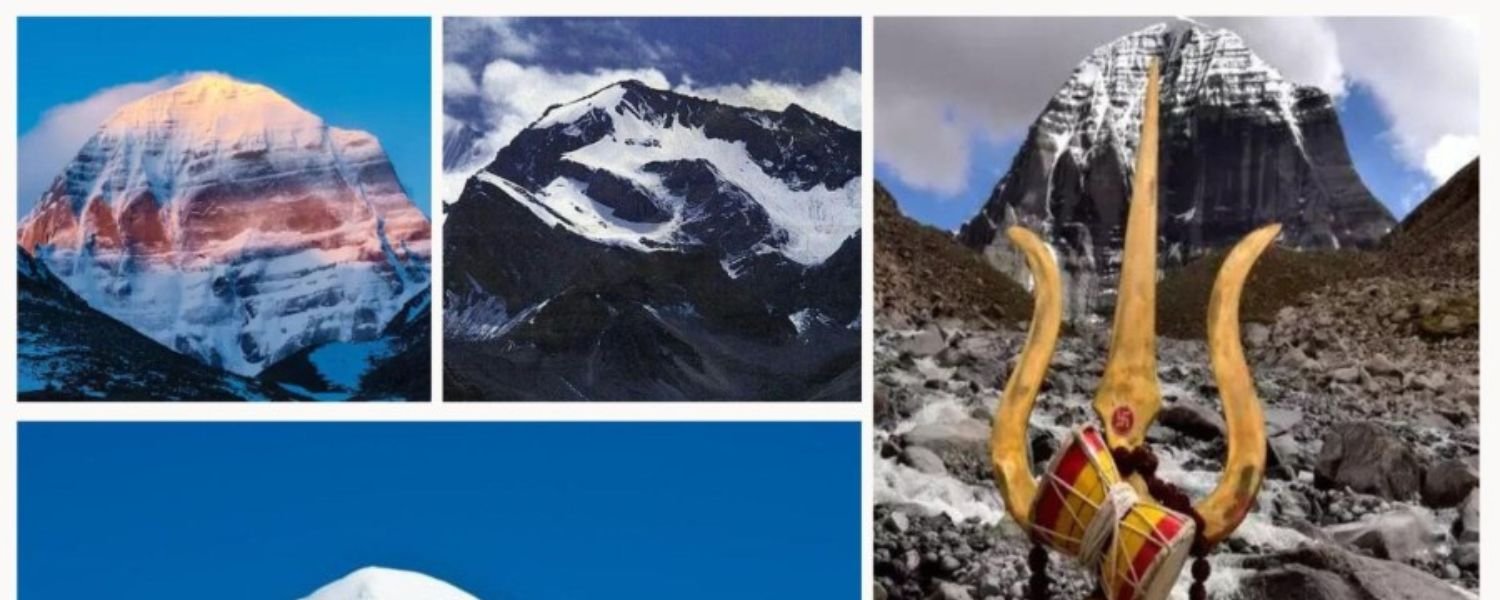
The cultural importance of Mount Kailash transcends religious boundaries, uniting pilgrims from Hinduism, Buddhism, Jainism, and Bon faiths in a shared quest for spiritual enlightenment and transcendence.
This sacred site symbolizes humanity’s enduring search for meaning and connection with the divine. The journey to Mount Kailash is more than just a physical trek; it’s a deep spiritual quest.
Pilgrims engage in ancient rituals, chants, and prayers, seeking a profound connection with the mountain that transcends the physical realm.
At Mount Kailash, cultural traditions come alive through vibrant rituals and practices passed down through generations.
Devotees engage in acts of devotion such as circumambulating the mountain, offering prayers, and performing sacred rituals at designated sites along the pilgrimage route.
These rituals act as tangible manifestations of devotion and respect, nurturing a feeling of solidarity and companionship among pilgrims hailing from varied cultural backgrounds.
Moreover, the pilgrimage to Mount Kailash fosters cultural exchange and dialogue as pilgrims from different traditions share their beliefs, customs, and experiences.
This cultural exchange enriches the pilgrimage experience, deepening mutual understanding and respect among participants.
Pilgrimage Routes
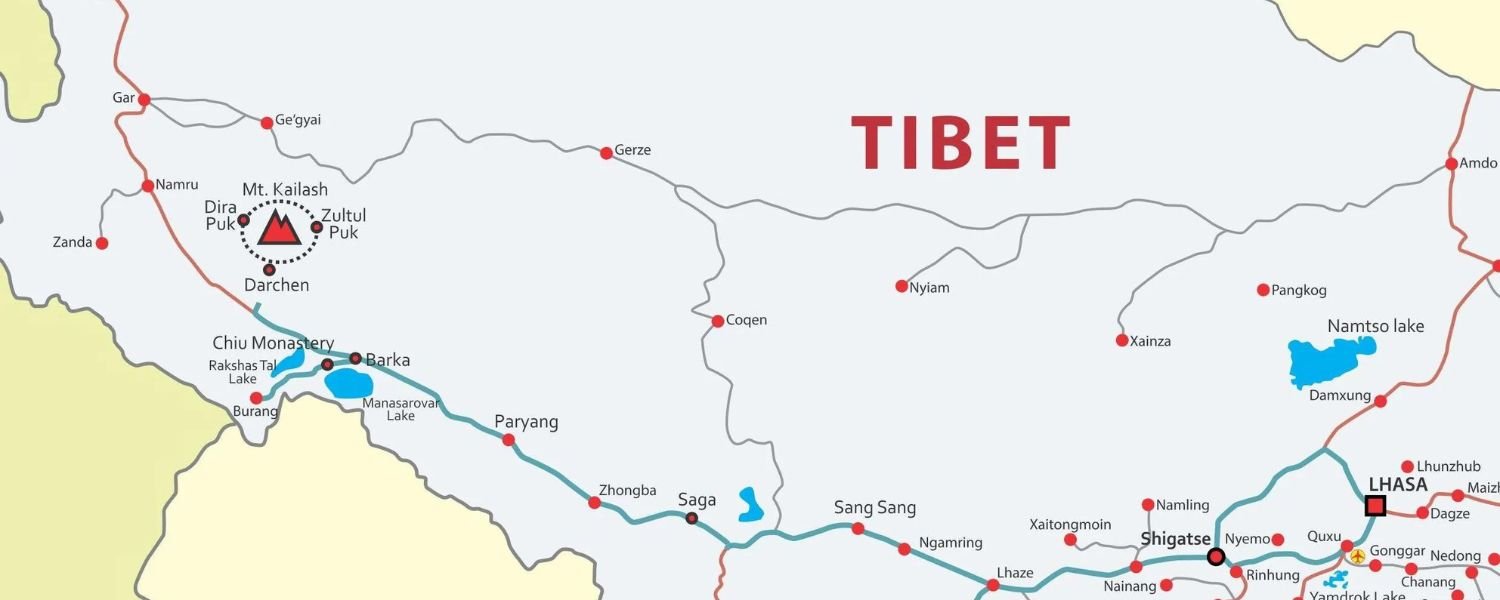
Pilgrimage routes to Mount Kailash offer diverse experiences, each imbued with its own challenges and rewards. The most renowned route is the kora, a circumambulation of the mountain that spans approximately 52 kilometers.
This sacred trek typically takes three days to complete, though some pilgrims may choose to extend their journey for a more immersive experience. The kora begins at Darchen, a small town situated at the base of Mount Kailash.
From here, pilgrims embark on their clockwise journey around the mountain, following a well-trodden path that winds through rugged terrain and sacred valleys. Along the way, they encounter several significant landmarks, including Dirapuk
Monastery, Zuthulphuk Monastery, and Gauri Kund, each steeped in myth and legend.
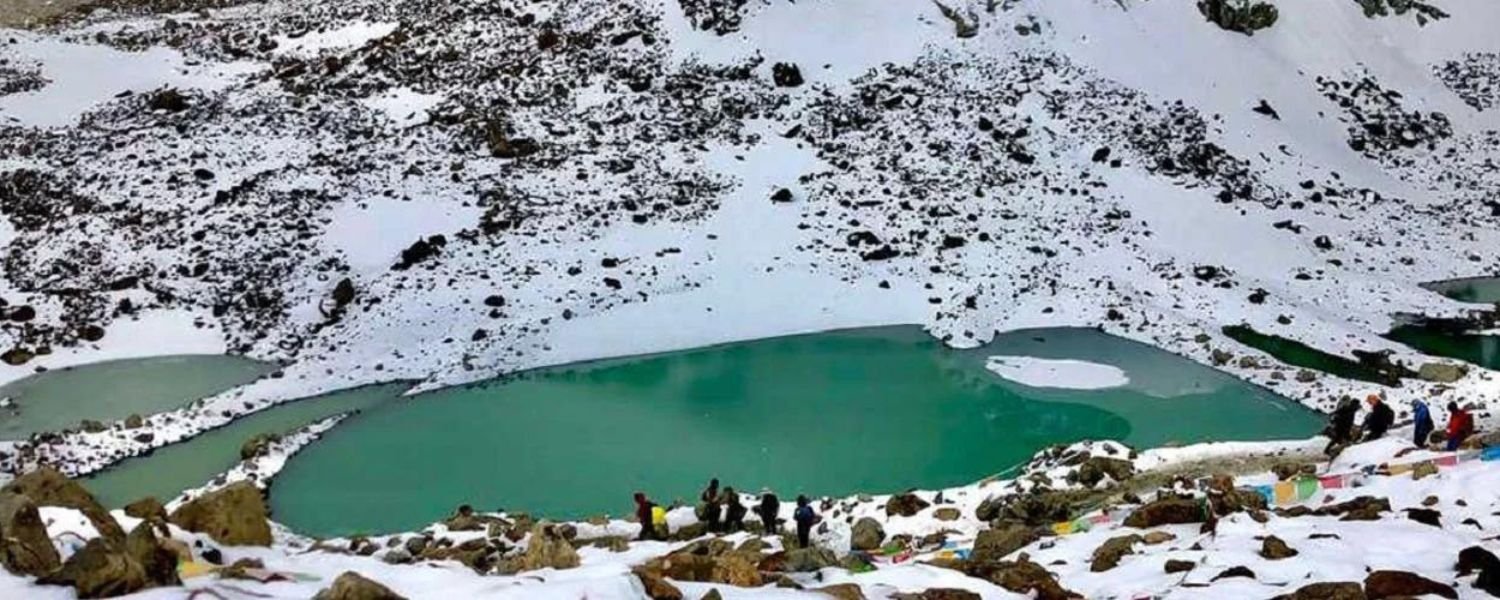
The pilgrimage route presents physical challenges, including steep ascents, rocky terrain, and high altitudes reaching over 5,600 meters (18,300 feet).
Pilgrims must navigate these obstacles with care, mindful of their physical limitations and the need for proper acclimatization. Despite the hardships, the pilgrimage route offers moments of profound spiritual insight and connection.
Pilgrims chant sacred mantras, offer prayers, and perform prostrations at designated sites, deepening their spiritual bond with the mountain and surrounding landscape.
At the culmination of their journey, pilgrims return to Darchen with a sense of accomplishment and spiritual renewal, having completed the sacred kora and received blessings from Mount Kailash itself.
The pilgrimage route is a testament to the enduring power of faith and devotion, inspiring pilgrims to embark on their inner journey toward enlightenment and liberation.
Religious Rituals and Practices
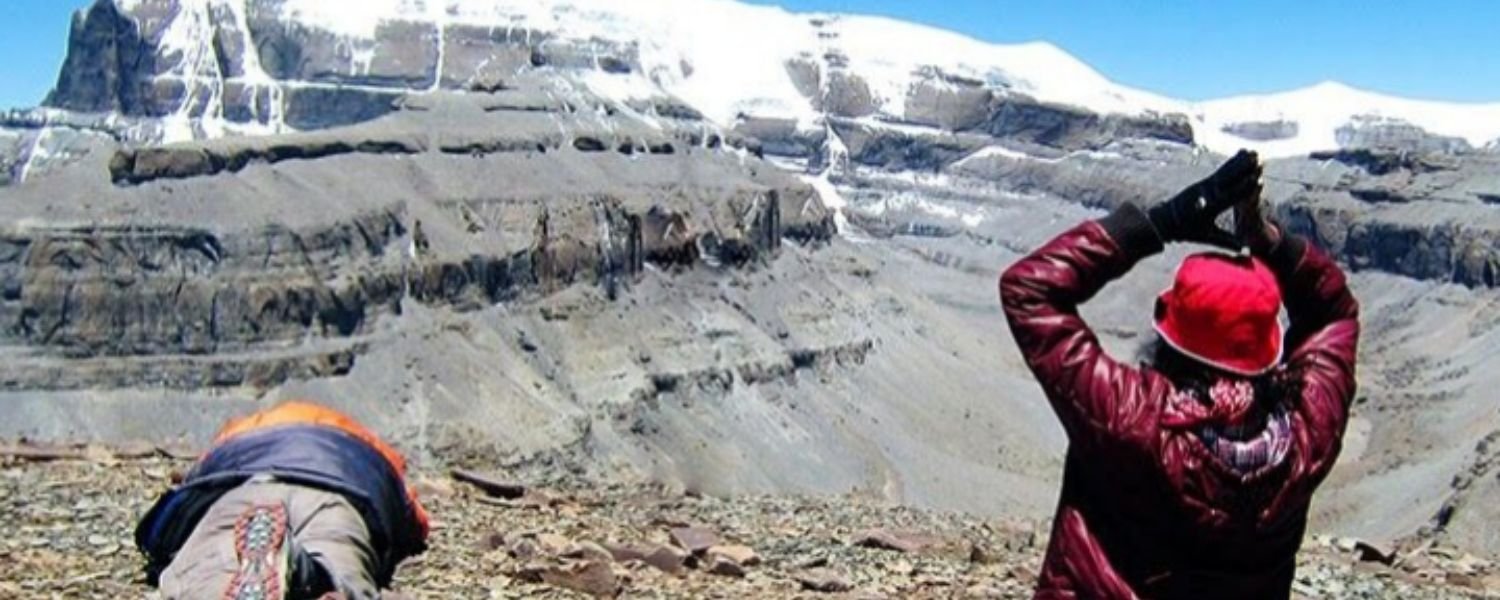
Religious rituals and practices are central to the pilgrimage to Mount Kailash, enriching the spiritual experience and fostering a deeper connection with the sacred mountain.
1. Circumambulation (Kora)
The primary ritual of the pilgrimage involves circumambulating Mount Kailash in a clockwise direction, known as the kora.
Pilgrims undertake this sacred journey on foot, traversing a path approximately 52 kilometers around the mountain’s base.
Each step of the kora is imbued with spiritual significance, symbolizing the soul’s journey towards enlightenment and liberation.
2. Chanting Mantras
Throughout the pilgrimage, devotees chant sacred mantras, invoking the blessings of the divine. Mantras such as “Om Namah Shivaya” (Hindu), “Om Mani Padme Hum” (Buddhist), and “Tayata Om Muni Muni Maha Muniye Soha” (Tibetan) resonate through the valleys, infusing the journey with a sense of spiritual resonance and vibrancy.
3. Offering Prayers
Pilgrims offer prayers and make offerings at designated sites along the pilgrimage route, including monasteries, stupas, and natural landmarks.
These acts of devotion are tangible expressions of reverence and gratitude towards the mountain and its spiritual significance.
4. Prostrations
Pilgrims perform prostrations, a physical expression of humility and surrender, at various points along the pilgrimage route.
By bowing down and touching the ground with their forehead, palms, and knees, devotees symbolically surrender their ego and worldly attachments, opening themselves to the divine grace and blessings of Mount Kailash.
5. Bathing in Sacred Waters
Pilgrims cleanse themselves spiritually by bathing in the sacred waters of nearby rivers and lakes, such as Lake Manasarovar and Lake Rakshastal.
The purification is believed to wash away sins and impurities, preparing the pilgrim for a more profound spiritual experience.
6. Meditation and Contemplation
Amidst the serene surroundings of Mount Kailash, pilgrims engage in meditation and contemplation, seeking inner peace and spiritual insight.
The tranquil ambiance of the mountain provides a conducive environment for introspection and self-discovery.
7. Offering Prayers at Monasteries
Pilgrims visit monasteries and temples along the pilgrimage route to offer prayers, receive blessings from resident monks, and partake in religious ceremonies.
These sacred spaces serve as focal points for spiritual communion and collective worship.
Historical References
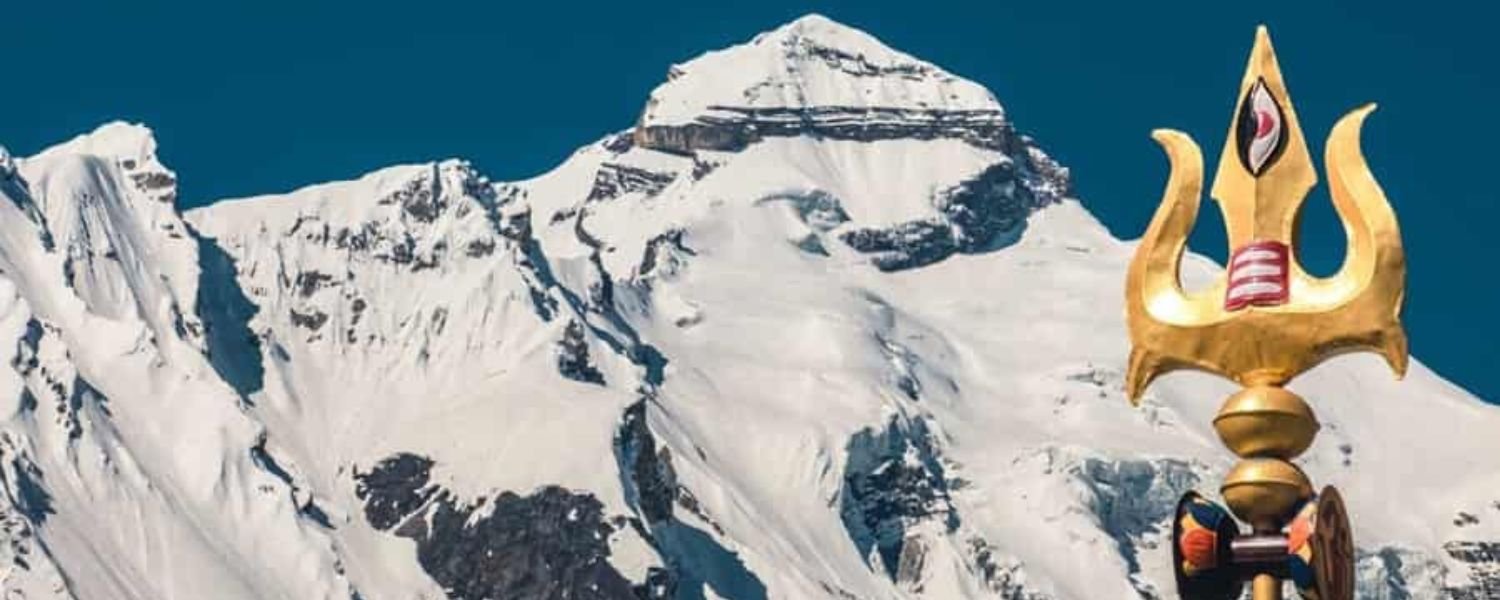
Historical references to Mount Kailash abound in ancient texts and scriptures, spanning thousands of years and multiple religious traditions.
These references offer insights into the mountain’s enduring significance and revered status as a sacred pilgrimage site.
1. Vedic Texts
Mount Kailash finds mention in the ancient Vedic texts of Hinduism, including the Rigveda and the Atharvaveda.
These scriptures describe the mountain as the mythical abode of Lord Shiva, the Hindu deity associated with creation and destruction.
Mount Kailash is revered as the center of the universe, radiating divine energy and cosmic power.
2. Puranas
Hindu Puranas, such as the Skanda Purana and the Shiva Purana, contain elaborate narratives and descriptions of Mount Kailash.
These texts recount the legends and myths associated with the mountain, including the divine exploits of Lord Shiva and his consort, Parvati.
Mount Kailash is depicted as the ultimate destination for spiritual seekers, where the gods themselves reside in eternal bliss.
3. Buddhist Texts
In Buddhism, Mount Kailash is revered as the sacred abode of Chakrasamvara, a tantric deity symbolizing enlightened consciousness.
Buddhist texts, including the Kangyur and the Tangyur, reference Mount Kailash as a place of pilgrimage and meditation for Buddhist practitioners. The mountain is regarded as a potent symbol of enlightenment and liberation.
4. Jain Texts
Jainism also holds Mount Kailash in high esteem, associating it with spiritual liberation and enlightenment.
Jain texts, such as the Kalpasutra and the Tattvartha Sutra, describe Mount Kailash as a sacred mountain inhabited by celestial beings and revered by Jain ascetics.
The mountain serves as a focal point for Jain pilgrimage and spiritual practice.
5. Bon Tradition
In the Bon tradition of Tibet, Mount Kailash is regarded as the “Nine-Story Swastika Mountain,” representing the axis mundi or the center of the universe.
Bon scriptures contain references to Mount Kailash as a sacred site of pilgrimage and ritual practice, embodying the essence of Bon cosmology and spirituality.
Mythological Legends
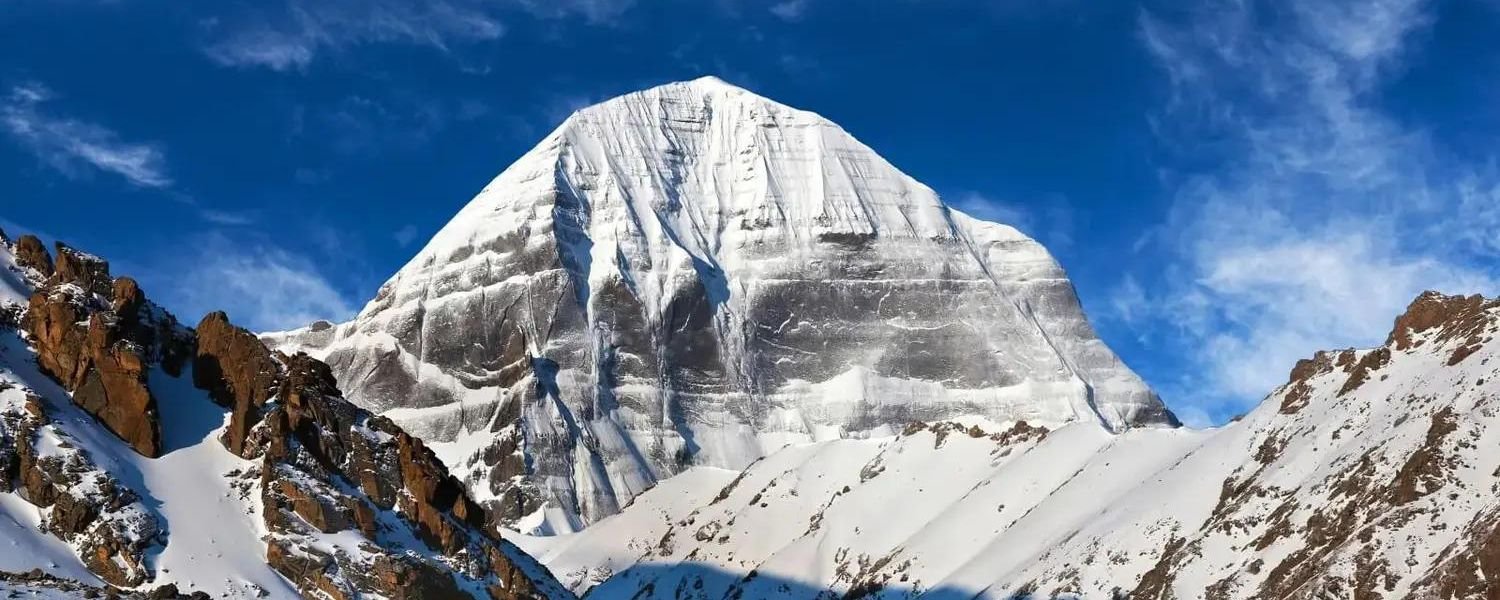
Mythological legends surrounding Mount Kailash are as diverse and captivating as the cultures that revere it.
These tales, woven through centuries, imbue the mountain with an aura of mystery and divine significance, shaping the beliefs and practices of pilgrims and devotees.
1. Abode of Lord Shiva
The most prominent mythological legend associates Mount Kailash with Lord Shiva, one of the principal deities in Hinduism.
As per Hindu mythology, Mount Kailash is believed to be the celestial residence of Lord Shiva and his divine consort, Parvati.
The mountain is believed to be a manifestation of Lord Shiva’s cosmic form, with its distinctive peak resembling Shiva’s face.
This mythological connection has made Mount Kailash a revered site for Hindu pilgrims seeking the blessings of Lord Shiva.
2. Center of the Universe
Various traditions often regard Mount Kailash as the center of the universe. In Hinduism, believers consider it the axis mundi, the cosmic pillar connecting the heavens and the earth.
Similarly, in Buddhist and Jain cosmology, they see Mount Kailash as a sacred axis around the universe, symbolizing the spiritual center and the path to enlightenment.
3. Cosmic Dance of Lord Shiva
Another popular legend recounts the cosmic dance of Lord Shiva atop Mount Kailash. Known as the Tandava, this divine dance symbolizes the eternal creation, preservation, and destruction cycle.
Believers say that the rhythmic movements of Lord Shiva’s dance resonate throughout the universe, shaping existence’s course.
4. Origin of Sacred Rivers
Several sacred rivers, including the Ganges, Indus, Sutlej, and Brahmaputra, also originate from this peak.
Mythological accounts claim that these rivers flow from the pristine waters of Lake Manasarovar at the base of a sacred peak, bringing the mountain’s blessings to the world.
5. The Longing of Parvati
In Hindu mythology, a poignant legend tells of Parvati, Lord Shiva’s consort, longing to behold the sacred peak’s real face, believed to be Lord Shiva’s.
Responding to her deep yearning, the mountain manifested features resembling Shiva’s face, fulfilling Parvati’s desire and enhancing its spiritual significance.
Natural Features
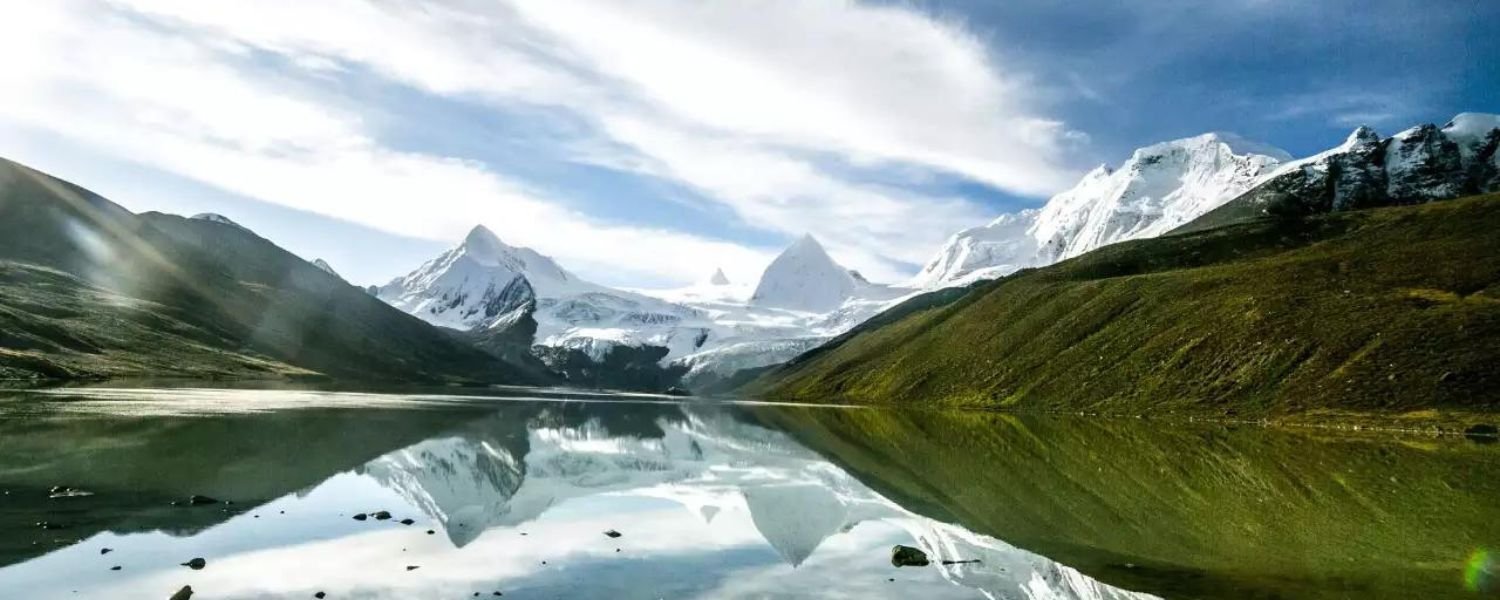
Snow-capped peaks, pristine glaciers, and lush alpine meadows characterize this location, renowned for its breathtaking natural beauty.
Its serene surroundings evoke a sense of awe and reverence, inspiring pilgrims to contemplate the wonders of creation and their place within it.
Sacred Lakes

The vicinity of Mount Kailash is adorned with sacred lakes, each possessing its spiritual significance. Lake Manasarovar, located at the mountain’s base, is revered as the “Lake of Enlightenment” in Hinduism and Buddhism. Pilgrims undertake ritualistic dips in its holy waters, seeking spiritual purification and blessings.
Climbing Expeditions

Mount Kailash remains largely unclimbed despite its spiritual significance, with only a handful of expeditions attempting its ascent.
The mountain’s steep slopes, unpredictable weather, and cultural reverence make it a formidable challenge for even the most experienced climbers.
Moreover, religious beliefs dictate that the mountain should not be summited, discouraging climbing expeditions.
Environmental Conservation
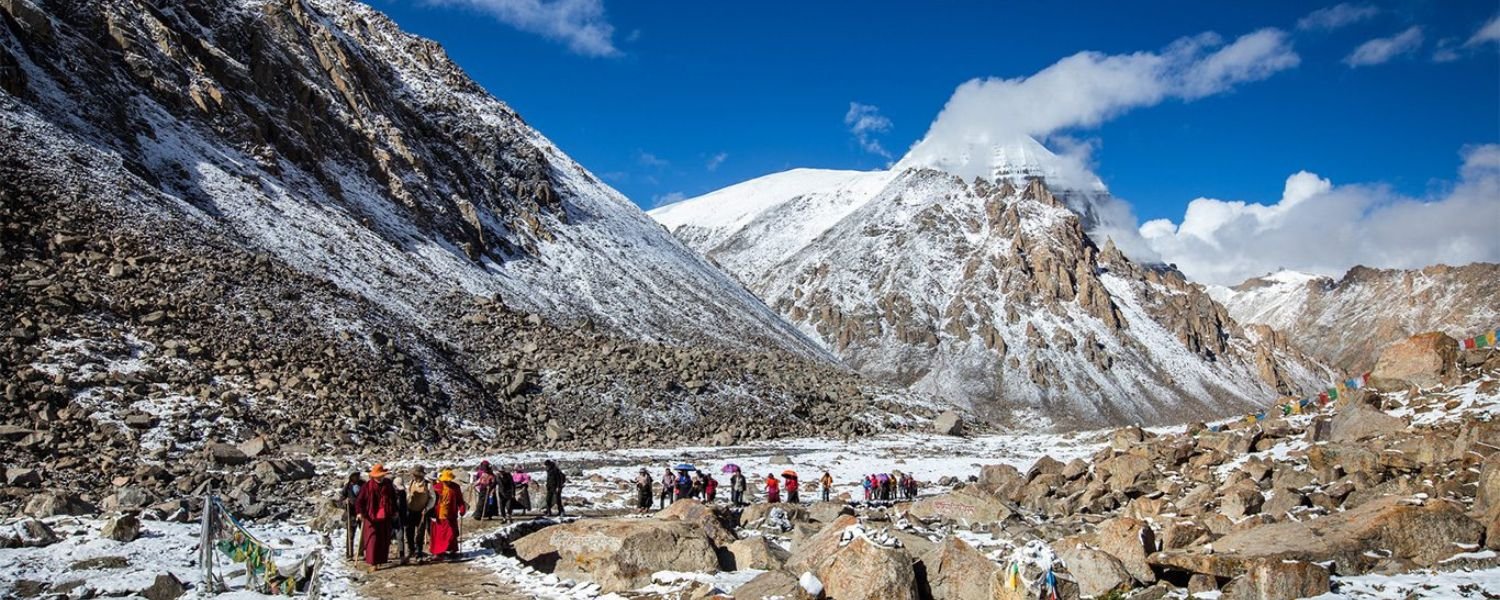
Efforts are underway to preserve the pristine environment surrounding Mount Kailash and mitigate the impact of tourism on its fragile ecosystem.
Sustainable tourism practices, waste management initiatives, and conservation projects aim to safeguard the mountain’s natural beauty for future generations to cherish and admire.
Local Communities
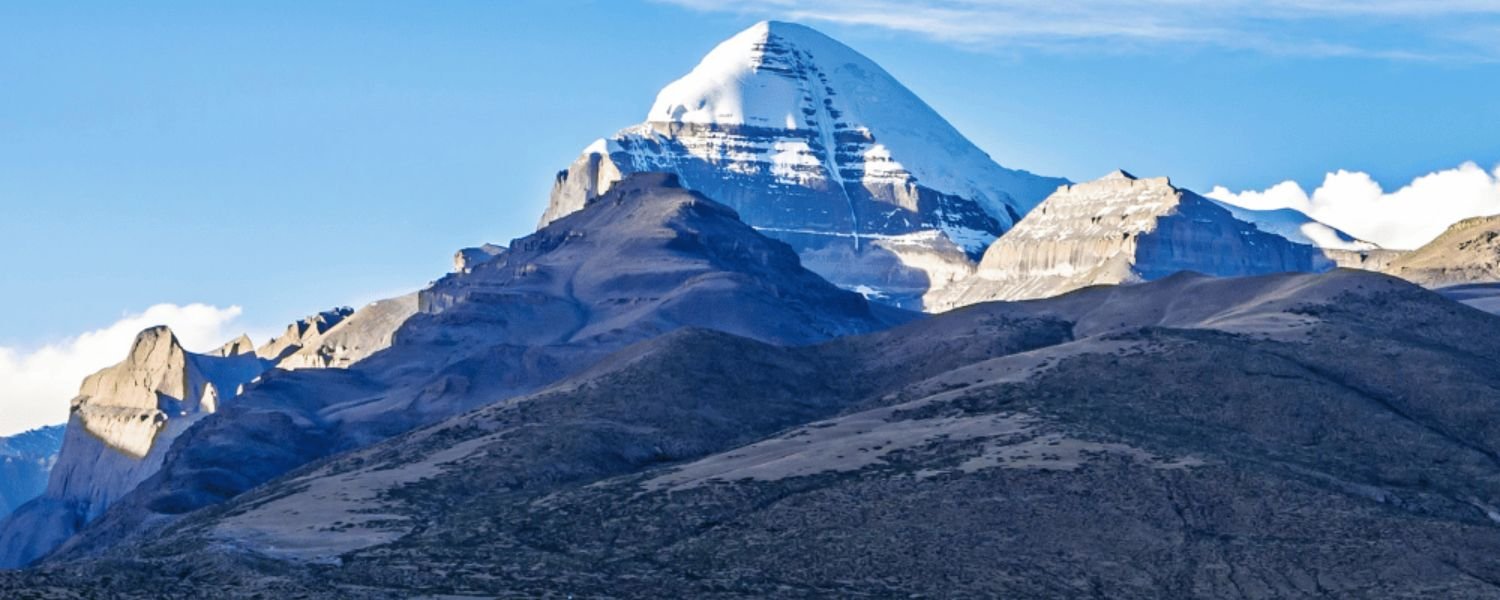
Local communities around Mount Kailash play an integral role in preserving the region’s cultural heritage and spiritual significance.
These communities, comprised primarily of Tibetans and ethnic minorities, are deeply connected to the mountain and its surrounding landscape, shaping their life and traditions for generations.
1. Tibetan Nomads
Nomadic herders known as “drokpas” are among the indigenous communities that call the region around Mount Kailash home.
These Tibetan nomads lead a traditional way of life, herding yaks and sheep across the vast grasslands and high plateaus.
Their intimate knowledge of the land and its resources is passed down through oral tradition, ensuring the sustainability of their livelihoods in harmony with nature.
2. Monastic Communities
Monasteries and nunneries dot the landscape around Mount Kailash, serving as spiritual sanctuaries for Buddhist practitioners.
Monastic communities, consisting of both monks and nuns, maintain age-old customs of meditation, prayer, and religious scholarship, safeguarding the profound cultural legacy of Tibetan Buddhism.
These monastic institutions also play a vital role in providing spiritual guidance and support to pilgrims undertaking the journey to Mount Kailash.
3. Local Guides and Porters
Local guides and porters help pilgrims navigate and understand the sacred journey’s cultural and terrain significance.
These guides, often belonging to indigenous Tibetan communities, serve as ambassadors of their culture, sharing stories, traditions, and insights with pilgrims worldwide.
Wildlife Surrounding Mount Kailash
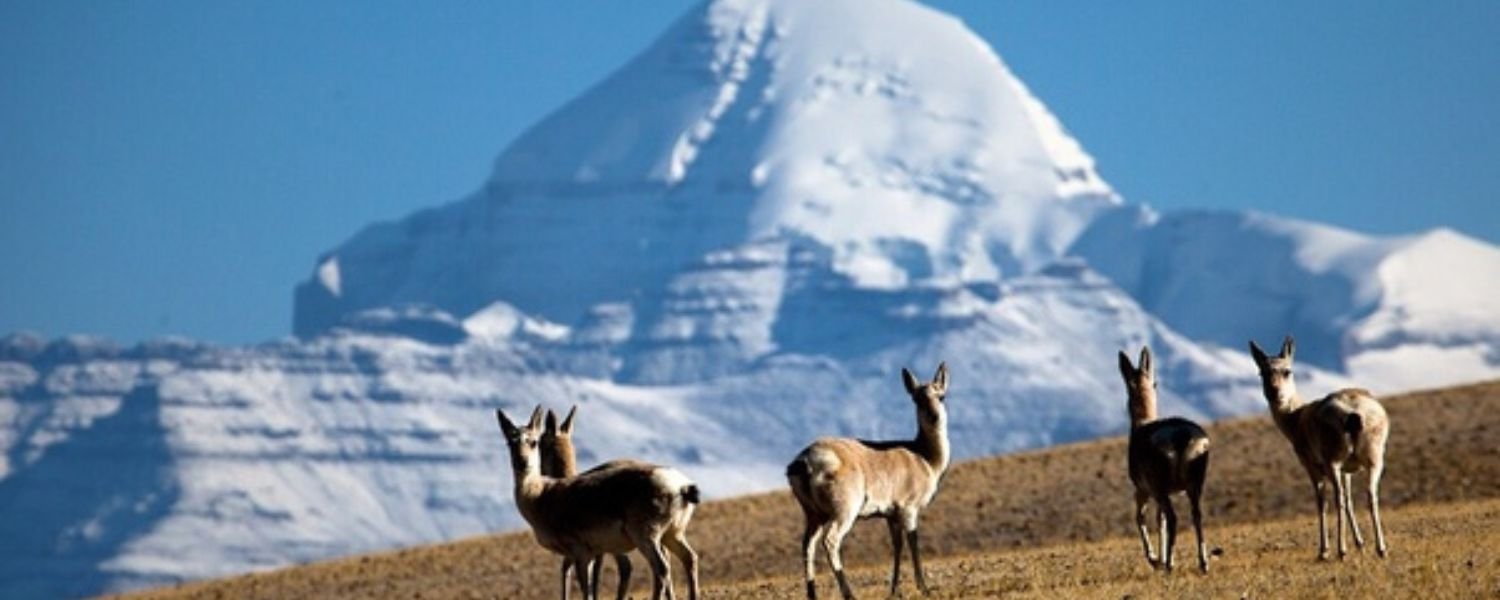
The rugged terrain surrounding Mount Kailash is home to a diverse array of wildlife, including Himalayan blue sheep, Tibetan antelope, and snow leopards.
Efforts to protect these endangered species are integral to maintaining the region’s ecological balance and preserving its biodiversity.
Impact on Tourism
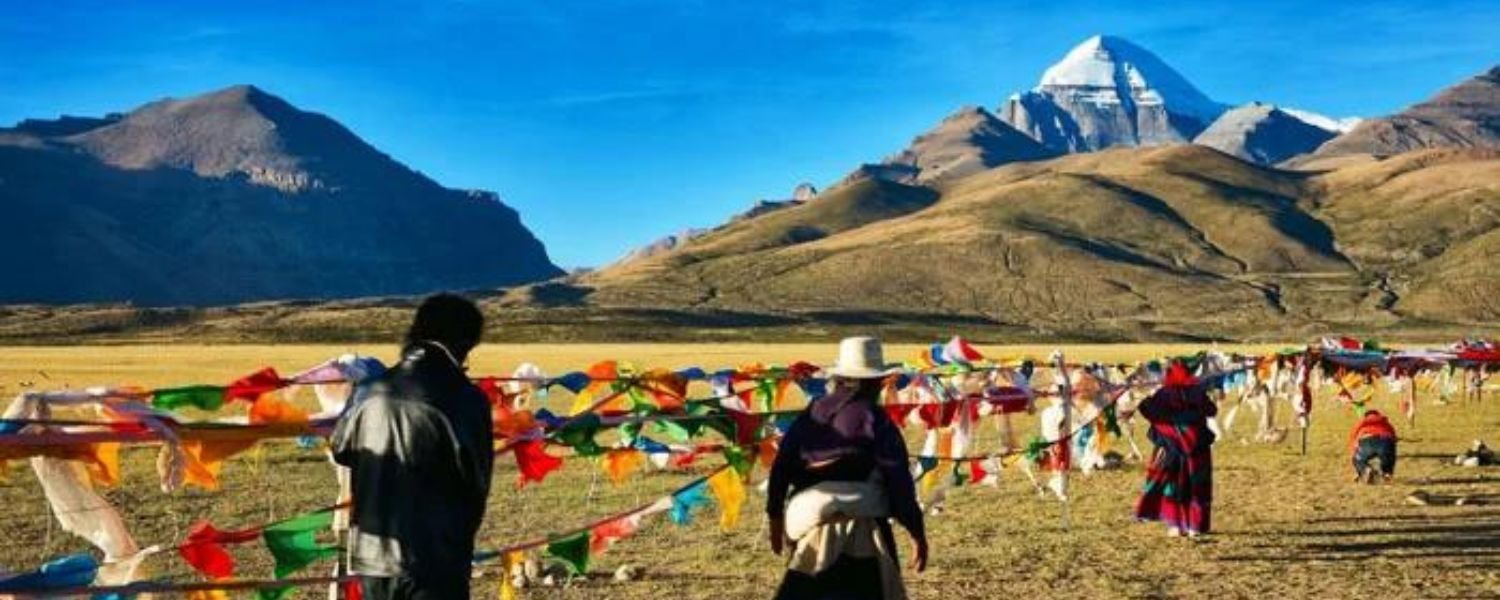
The pilgrimage to this sacred peak has witnessed a surge in tourist footfall in recent years, drawn by its spiritual allure and natural beauty.
While this influx of visitors has provided economic benefits to the region, it also poses challenges to environmental conservation and cultural preservation.
Maintaining sustainable tourism practices is crucial to ensure that the pilgrimage to this sacred peak continues to inspire and be revered by future generations.
Conclusion
The pilgrimage to this sacred peak symbolizes strong faith, drawing diverse pilgrims for a spiritual journey. Its cultural traditions and rituals remind humanity of its quest for transcendence and unity amidst diversity.
As we reflect on the mystique and majesty of this sacred peak, may we find inspiration in its timeless beauty and profound spiritual significance.
For More Religious-Related Blogs, subscribe to us now!
FAQ
Q. Why is Mount Kailash unclimbable?
Hinduism, Buddhism, Jainism, and Bon faiths consider Mount Kailash unclimbable due to its religious significance. Authorities prohibit climbing the mountain to respect its sanctity and spiritual importance.
Q. What is the honest Mount Kailash Shiva face?
The Mount Kailash peak, resembling Lord Shiva’s face, symbolizes creation and destruction in Hinduism.
Q. What are some Mount Kailash secrets?
Mystery and legend shroud Mount Kailash, with tales of celestial beings, mythical creatures, and hidden treasures. Some believe that those seeking spiritual enlightenment will discover ancient secrets harbored by the mountain.
Q. How tall is Mount Kailash?
Mount Kailash is 6,638 meters (21,778 feet) above sea level, making it one of the tallest peaks in the Transhimalaya range.
Q. Is Parvati’s real Mount Kailash Shiva face?
In Hindu mythology, Parvati’s desire to see Shiva’s true face led to the manifestation of a mountain with features resembling his face.
This legend adds to the mountain’s spiritual significance for devotees. Exploring the cultural and spiritual depths of this sacred site offers timeless wisdom and solace to seekers.


